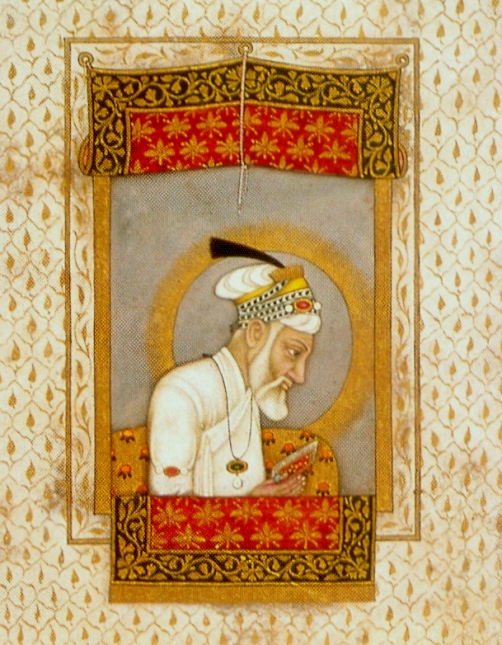
Aurangzeb reading the Quran.
Dominica Zalbidegoitia, from Dima, Arratia (Bizkaia), was the woman who (a century ago, give or take a decade) related the following oral legend to Resurrección María de Azkue:
The tail of the snake
There lived two brothers in Bargundia, a farmstead in Dima. One day, once their daily labour in the fields was completed, the two brothers returned to the house each with a stack of wheat on the shoulders, and on resting it down, a snake crawled out. One of the brothers started to beat the snake. The other told him:
─Leave it. It is God’s creature, so leave it in peace.
But he ignored the boy and hit the snake again and again until its tail was cut off; and the tailless snake headed for the mountain.
Soon after, him who had said the snake should be left alone was enlisted as a soldier and sent far away. When Christmas came the soldier said:
─Alas, I wish I was home!
And without him realising, a man appeared before him and said:
─I shall take you home.
The stranger bent down, lifted the soldier over his shoulders and brought him. When they reached Bargundia, he lifted the soldier off his shoulders and presented him with a red sash for him who had cut off the tail of the snake. On entering the farm, it occurred to the boy to tie the sash around the walnut tree at the side of the house instead of giving it to his brother, and all of a sudden the sash uprooted the tree.
The story concerns a supernatural being that maliciously bestows a gift of special clothing upon a human but does not achieve its purpose, for a tree is girdled with the deadly garment and finally destroyed in place of the intended victim.
It shares themes with tales found in the oral tradition of Asturias and Galicia, or even more remote places such as Scandinavia, Madagascar, central Asia and indigenous America among others. Let this narrative from Indian lore gathered by Hamilton serve as example:
About the year 1685, when Aurangzeb’s army was in Deccan, he wanted to bring Sevajee Rajah [Raja Sivaji] to submission. A son of Aurangzeb, called Sheek Eckbar [Prince Akbar], had contracted a friendship with the Rajah. His father having notice of it, dissembled his resentment, till he had, by fair promises, invited Sevajee to come to his camp, intending to capture and kill him. But his son Akbar warned the Rajah, who departed secretly in the night, without taking a formal leave, which Aurangzeb imputed to his son’s advice to the Rajah. Aurangzeb intended to kill his son in revenge, by a stratagem; wherefore, pretending more kindness than ordinary to his son, he sent him a vest, which was very rich and beautiful, but poisoned by a perfumed powder. His son, with great acknowledgments, received the present, but, being too well acquainted with his father’s subtlety, put not the vest on, but deferred it to another time, that he might put it on with more solemnity. Then he ordered it to be put on a slave, who died a day or two after he put it on. On which Sheek Eckbar fled to Rajahpore, from whence he escaped with the help of two English gentlemen…
José Manuel Pedrosa – Professor at the University of Alcalá
Translated by Jaione Bilbao – Language Department – Labayru Fundazioa
Top picture taken from paradoxplace.com.
[…] posts by José Manuel Pedrosa: Deadly clothing (I) and Deadly clothing […]